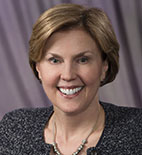Our Senior Vice President of Advancement Kaye Ridolfi shares the benefits of establishing a supporting organization in this guest blog post, originally published in Crain’s Cleveland Business.
For individuals and families with charitable resources exceeding $5 million, the supporting organization is a fantastic structure to help maximize philanthropic impact while minimizing overhead and other expenses that can be associated with private foundations. At the Cleveland Foundation, supporting organizations operate as “foundations within a foundation,” maintaining their own board of trustees and grantmaking identity while enjoying public charity status. This special relationship with a public charity, such as the Cleveland Foundation, is the hallmark of supporting organizations, allowing tax-deductible gifts at a higher rate than private foundations.
A supporting organization may be established with a gift of cash or appreciated securities, and tax-deductible contributions may be added at any time. As such, there are many tax planning advantages of supporting organizations, and this structure is also useful in estate planning. Some donors establish a supporting organization during their lifetime and then augment it through their estate, thus laying the groundwork for family legacy planning and involving successive generations in philanthropy.
The board of directors of a supporting organization has full grantmaking and fiduciary authority. Typically, the board of a supporting organization is composed of five to nine members, including the donor family as well as members of the public whose expertise aligns with the supporting organization’s mission. At the Cleveland Foundation, our staff provides high-level support with project research, docket preparation and regulatory filings. The supporting organization benefits from the foundation’s century of grantmaking experience and community insight. In addition, foundation staff handle all back-office functions.
Because operational resources are maximized and not replicated, the donor and their family are saved the burden of hiring their own staff, securing office space and funding other operational expenses. In fact, the first supporting organization in the country was invented in 1973 by the Cleveland Foundation. The donor couple partnered with us in petitioning the IRS to formalize this model of philanthropy due to the efficiencies that could be gained by donors and the community alike. Today, there are more than 600 supporting organizations associated with community foundations nationwide, according to the Foundation Center.
In addition to conserving precious charitable dollars, the supporting organization model frees the donor and family from the details of day-to-day operations, allowing them more time to enjoy a focus on giving itself.
A supporting organization’s board selects its financial investment manager at the outset. We offer more than 20 investment options through the Cleveland Foundation, or a board may elect an outside investment manager. We share annual reviews with each supporting organization, and a board may elect to change its investment manager at any time. As grants are made, supporting organization earnings help replenish the dollars available for community benefit. It’s gift — grant — earn — repeat!
Interested in learning more about supporting organizations? Contact Kaye via 216-685-2006 or send her an email.




